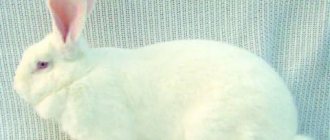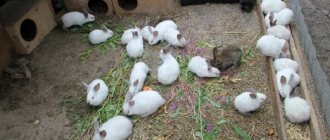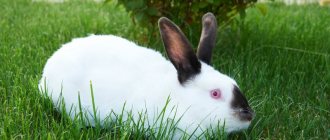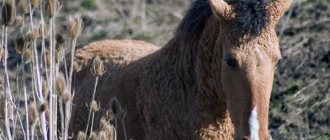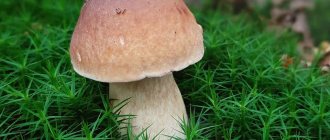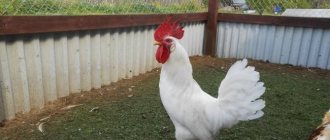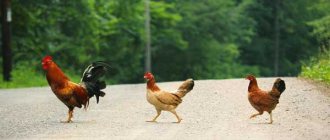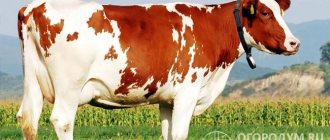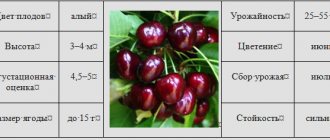The Angora rabbit is a whole group of eared rabbit breeds that are bred to obtain beautiful long fur. The fur of these animals is used to spin the world-famous Angora wool. Due to their excellent aesthetic characteristics, animals are happily bred as decorative pets. There is not a person who could look at such beautiful animals with indifference.
Interesting Facts
The world became aware of Angora wool after the first Angora rabbits were bred, and not Merino goats or Angora sheep, as many believe.
Origin story
For the first time, downy Angora rabbits appeared in Turkey - in any case, the first mention of them is found here. It is also believed that the name of the breed comes from the capital of this state - Ankara.
Fluffy rabbits came to Europe thanks to sailors. Here they began to be bred as beautiful pets - the strange animals were kept mainly by aristocrats. Over time, the breed spread throughout the world. In Russia, the Angora rabbit has been bred since the 19th century.
Today, the largest producer of Angora rabbit fur is China. More than 8,000 tons of raw materials are obtained here.
Mr. Tail recommends: Angora varieties
There are many varieties of Angora. Here are some of them.
English Angoras
Small and very fluffy animals (fluff is located everywhere, even on the face and ears) with a body weight of 2 to 3.5 kg, with an annual down yield of up to 450 g. The colors are different - white, cream, chocolate, charcoal. The fur grows so thickly and abundantly that the animal’s eyes are not even visible.
French Angoras
This variety is most often used on large farms and bred on an industrial scale, as these animals are the easiest to care for. The coat leaves the muzzle, ears and front paws free. Body weight 3.5-4.5 kg, down yield per year is about 550 g. Colors are different.
Until 1939, rabbits from England and France were considered two branches of one breed - Angora Powder. But then they were separated due to too strong functional and morphological differences.
In addition, the fur of the English variety is slightly longer than that of the French variety and covers the entire animal, including the muzzle, ears, and paws.
The French Angora has generally bare ears, and the hair on the front legs and face is very short.
German Angoras
Also good for industrial breeding. These are large animals with exclusively snow-colored fur. The eyes are red. The weight of individuals is from 4 to 5.5 kg, the yield of fluff per year is up to 1.5 kg.
Giant Angoras
The largest variety weighs from 4.5 to 6 kg and is only white. Unlike the Germanic species, the eyes can be either red or cornflower blue. The ears end in small brushes. The yield of down per year from one individual is about 1.2 kg.
German Angoras, French Rams and Flanders participated in the development of the breed. The Giant's eyes are very small, red only in the albino type.
Downy Angoras (White, colored, Soviet)
This variety is a breeding development of Russian scientists. Has many different colors. A distinctive feature is the acclimatization of the species to harsh weather conditions. The animals weigh from 3 to 4.5 kg. The annual volume of fluff from one rabbit is about half a kilogram. There are tassels on the ears.
Bred by crossing Kirov rabbits with French Angora.
Russian Angora Dwarfs
An ornamental variety, distinguished by its low weight (up to 2 kg), a strong small body with a rounded head, a wide head and a variety of colors - white, black, piebald, blue, red, less commonly piebald and bluish-piebald.
Satin Angoras
These animals are also called Satin. The fur has a special gloss and extraordinary softness. It is quite easy to care for animals, since the fluff grows only on the body, on the muzzle, ears, and front legs it is short.
In general, this variety is very reminiscent of the French Angora, because it was obtained by crossing the latter with Satin Rabbits. Weight is 3.5-4 kg, the yield is small - 400 g, but of the highest quality and the wool from this fur is unusually durable.
So far, only single-color colors are recognized, although piebald and ticked ones have already appeared.
Rabbit breeders are busy developing new varieties of Angora. Already known are Chinese, Swiss, Finnish, Korean, St. Lucian, and others.
Undoubtedly, all varieties have the blood and genetic form of their distant relatives - Turkish Angoras, but in order to acclimatize to the local conditions of the breeding countries, the blood of other aboriginal rabbits was mixed into them.
Description and characteristics of the Angora rabbit
Breeding Angora rabbits is preceded by the purchase of livestock. If the breed is intended to be bred, then it is especially important to purchase healthy animals that match the exterior.
General features of the breed:
- Rabbits of all subspecies of Angora have a shortened cylindrical body and a large head. The muzzle can be blunt or elongated - depending on the breed.
- The ears are small, with fluffy tufts at the ends. The “hairstyle” depends on the breed, but most have long hair.
- All subspecies of rabbits have very fast claws. They are sharp - the animal can cling tightly to the roots of trees and bushes. Because of this, rabbits' claws are cut 2 times a month.
- The fur covers the eyes, so it has to be carefully combed. Pooh should not cover your eyes.
Choosing a pet
Features of choosing an Angora rabbit:
- The rabbit must be more than three months old. By this time, the baby rabbit stops feeding on milk, acquires gender and breed characteristics, and the emotional and physical connection with the mother ceases. By 3 months, the animal completely switches to adult food.
- It is recommended to buy young animals in special nurseries or from breeders specializing in breeding purebred rabbits.
- The animal should jump happily from place to place and eat food with appetite. Rabbits prefer to rest by lying on their side.
- The anus, eyes and nose should be clean.
- The animal's fur should be soft to the touch and shiny. Coloring corresponds to the breed.
- The back is rounded, not hunchbacked or hunchbacked.
- Bite – the upper row of teeth should hang slightly over the lower row.
- Appearance and weight must be consistent with the breed. The standard weight of an animal, depending on the subspecies, can range from 2 to 6 kg.
When buying a purebred rabbit, be sure to check the documents confirming the breed, as well as the availability of vaccinations.
Fertility of downy rabbits
Angora rabbits give birth to two litters in the first year. In a year we get about 10-14 rabbits. The frequency of births increases every year. The total offspring produced by one rabbit is more than 40 cubs in 3-4 years.
Color
The color of Angora rabbits depends on the breed. He can be:
- snow-white;
- black;
- fiery red;
- dark brown;
- silver;
- chocolate is the rarest color.
It is believed that a purebred rabbit should be one color; several colors in the color are considered a defect. Each color has its own color of eyes and claws. For example, a snow-white rabbit has only red or blue eyes.
Character
Angora rabbits, as befits all rabbits, are shy. When near animals, you should not make noise or move suddenly. The animals are silent, they practically do not make sounds. This is especially true for decorative varieties. Rabbits of this breed are also distinguished by their friendly and playful disposition.
In the video below, the breeder talks about the character of Angora rabbits:
Lifespan
The average life expectancy of an Angora rabbit, with good care, is 6-8 years. The lifespan of animals in cages is longer than in pits or in the field. Animals on farms are usually culled at 5-6 years of age. The lifespan of female rabbits is even shorter - 4 years. After 4 years, the female’s productivity decreases, and keeping her becomes unprofitable.
Breeding
A distinctive feature of Angoras is late puberty. You can hope for offspring only after the female reaches the age of one year (for comparison: other breeds can have offspring as early as 5-6 months). One litter usually contains up to 8 young rabbits. By four months they already reach a weight of 1.5 kilograms. During pregnancy, the female needs to provide her with increased comfort in order to get healthy and fertile offspring.
Breeding Angora rabbits
Rabbits are bred in farms and production conditions. More than half of the female rabbits are used to obtain fur, while the rest are engaged in reproduction and reproduction of offspring, which are intended to replace sick and old brothers. After the second offspring, females also begin to be used for fur. Weaker rabbits are deprived of their down, and after the second time they are released for meat. In small industries and home farms, adult females are used only to give birth to offspring and obtain fluff.
The note! The Angora breed requires vaccinations. The first one must be placed at the age of 45 days, the next one should be placed 3 months later. After this, vaccination is carried out several times a year.
Pros and cons of the breed
Advantages:
- High wool yield. Angora rabbits participate in agricultural exhibitions, fairs, and festivals.
- Decorative. Animals are kept at home for pleasure, just as a pet.
- Calm behavior. The animal makes a minimum of sounds, is not aggressive, and does not scratch.
Flaws:
- The animals are quite small. They appear large because of their fluffy fur. Due to its low weight, this breed is not profitable to breed for meat.
- Requires careful care. Animals tend to get sick if they are poorly maintained.
- When kept at home, the problem of male marking of territory arises. Castration or keeping them in a cage solves the problem.
- An animal must constantly grind down its teeth, as they grow throughout its life. Because of this, domestic rabbits can chew furniture and wallpaper.
conclusions
- Angora rabbits are distinguished by high quality wool and fur, suitable for making clothing, accessories and decorative items.
- The largest representatives of the breed can also be raised for meat , while the dwarf ones can be raised as decorative pets.
- The diet of Angora rabbits differs little from the menu of other breeds. The ratio of the main food components and the presence of clean water in the cells are important.
- Do-it-yourself cages should be well ventilated and cleaned regularly. Untidy, dirty rooms can cause frequent illnesses and deterioration of the fur.
Home maintenance
Fluffy rabbits look like large fluff balls. Many people, fascinated by the beauty of the Angora breed, keep them as pets. Before bringing an animal into your home, it is useful to learn about the peculiarities of its maintenance.
Caring for Angora rabbits
Features of care:
- Angora rabbits are brushed regularly - once a week.
- Animals are washed with special solutions - they are sold in veterinary pharmacies. Rabbits do not like water treatments.
- The animals are clipped every 3-4 weeks. It is allowed to dry the wool with a hairdryer - at the same time, dead hairs are blown out.
- Grooming tools – metal combs, slicker brushes and scissors.
- At home, the rabbit is kept in a cage, which must be cleaned regularly. It is washed and any remaining food and feces are removed. If you keep an animal in the dirt, it will probably get sick, picking up some kind of infection. Treating rabbits is difficult, time-consuming and expensive.
- The cage contains a food bowl, a drinking bowl, a compartment for hay, a toilet - animals like to relieve themselves in one place, a rug and toys. You can put a box in the cage - the animal will be happy to hide in it.
- The cage is ventilated daily for half an hour. Stale air is harmful to rabbits.
- Low humidity is recommended so that the animals do not develop pneumonia and other diseases of the respiratory system.
Feeding
Rules and principles of feeding:
- The main food is concentrated feed mixtures, hay, vegetables. It is also fashionable to give crackers and dairy products. Every day, the diet should include seasonal fruits, greens, and juicy root vegetables.
- Rabbits need to be fed on time, otherwise they will chew inedible objects.
- Greens are given only in a limp form - they should lie down for a while. Rabbits happily eat alfalfa, reed, and hogweed.
- Along with the food, animals can receive vitamin and mineral supplements.
- Do not give moldy bread to rabbits.
- A specially designed drinking bowl should always be located at the feeding site - such that the rabbit cannot contaminate it with food or its own feces.
Food bowls should be ceramic so that the rabbit does not chew them off.
Training
Although rabbits are shy, they can be trained. In order for the animal to get used to a person, you need to stroke its fur more often. Taming is also facilitated by feeding all sorts of delicacies. Rabbits have a sensitive sense of smell, so they remember the smell of their owner and react positively to it.
Angora rabbits stand out among their peers for their intelligence and intelligence. They are able to carry out simple commands. However, training requires patience and regular practice from the owner. The rabbit must be let out of the cage every day. But you can’t leave him unattended - he’ll definitely chew something off. Electrical wires are especially dangerous - animals can be electrocuted by gnawing them.
It is recommended to walk domestic rabbits in the fresh air; a special leash is purchased for this purpose.
Do they get along with other pets?
Angora rabbits are peaceful, they easily get along with other animals - cats, dogs and others. If you raise a puppy and a little rabbit together, they will definitely be friends.
Rabbits love affectionate treatment, so before you get a fluffy ball, you should evaluate your capabilities - whether you have enough time and desire to take care of your pet.
Features of character and lifestyle
Photo: Decorative Angora rabbit
Angora rabbits are quite calm and peaceful animals. Like all representatives of the hare family, they are very shy. These animals love a calm and quiet environment, loud noises, a large number of people puts the animals under stress, so it is necessary to provide the most peaceful life for these pets.
Rabbits are usually active during the day, however, domestic rabbits may rest during the day and wake up at night to feed. Like all creatures, rabbits need to move a lot, and if the rabbit is not allowed out of the cage for a long time, the pet will begin to feel sad and may even become depressed, while the rabbit may lie motionless, or, conversely, behave aggressively, chew the cage and may begin to pluck its own fur.
Angora rabbits are very sociable, treat people very well, love affection and communication. Rabbits are usually friendly and will not bite people unless startled. But when communicating with their relatives, Angora rabbits often conflict. The fact is that rabbits instinctively protect their own territory, and when a stranger appears in the cage, a conflict can begin and the animals can fight to the death.
Therefore, if you need to keep several individuals in one cage, it is better to put them there at the same time and keep an eye on them. Rabbits have no social structure and do not form families. One rabbit takes care of the offspring, while it is better to place the pregnant rabbit in a separate cage so that other rabbits do not offend her.
Aviary maintenance
When breeding rabbits on a farm, sheds with outdoor enclosures are equipped for them - they are fenced with chain-link mesh. The pit method of keeping downy rabbits is unacceptable. When keeping downy rabbits, the main thing is to keep the down clean. And its shine and beauty depend on the completeness of the diet.
Young animals are kept separately from adults. Animals are kept in small groups, separated by gender. Pugnacious rabbits are placed in separate cages.
Is it profitable to grow?
Unlike rabbits bred for meat, downy breeds cannot be kept in pits. They need clean, dry enclosures, which cost money to build, and wool prices always fluctuate wildly. Ten years ago, they fell so low that Angora rabbit owners no longer benefited financially from breeding them.
After the next crisis, rabbit breeding in Russia was practically destroyed. Recently, the breeding of downy rabbits has experienced another boom. But Russian rabbit breeders have a major competitor - China, and a lot of Angora wool is also produced in Europe.
The business of breeding downy rabbits cannot be called extremely profitable - it requires material investments and careful care of the animals. But since rabbit breeding in Russia is now in decline, anyone who gets into the down business will definitely find a market and will not be left at a loss.
Purpose
Products made from rabbit fluff are pleasant to the touch, they are soft and silky. They are hypoallergenic, and even have a certain therapeutic effect - they help with neuralgia and radiculitis.
There are very few items made from Angora wool on sale today, but abroad they make jackets, knitwear, felt, velor, etc. from it. Products made from rabbit down are equal in value to vicuna, alpaca and cashmere. Unlike them, rabbit fluff does not require expensive processing - washing, drying, etc., it can be immediately recycled. And this is another argument in favor of developing the down business.
The video below explains the purpose of Angora rabbit fluff:
Conditions
Downy rabbits are kept perfectly clean. Their cages are regularly cleaned, cleaned and washed - this is the only way to maintain high quality wool. Where the animals live, there should be no garbage; even the traditional bedding of hay or sawdust is not thrown here - so that the excrement immediately falls through and the fur is not smeared. The cage must be perfectly smooth inside so that the rabbit does not get caught and get hurt.
Feeding
How to feed Angora rabbits:
- The Angora breed is fed according to the same standards as ordinary meat-skin rabbits. The only difference is in the rate of digestible protein. The daily norm for adults is 19-24 g. Therefore, Angoras are fed with meal, cake, meat and bone meal, skim milk, legume grain and special feed.
- The animals do not require any special nutrition, except for drugs to dissolve the fur in the stomach.
- To spend less grain and concentrates, increase the share of succulent and green feed.
- For up to six months, animals are fed unlimited amounts of complete pellets and hay. After six months, decorative rabbits are limited in food to prevent obesity. It is also contraindicated for animals bred for fluff to become fat, since excess fat reduces productivity and the fur becomes shorter.
- In order for the fur to grow well, the animals are fed pellets with a high protein content - 18%.
- Angora rabbits are fed: hay - alfalfa, timothy, meadow forbs;
- concentrates - complete granules;
- mixed feed consisting of oats, barley, wheat, corn;
- succulent food - root vegetables, vegetables, fresh grass.
Succulent food is given with caution, monitoring the condition of the rabbits’ intestines. If furry animals develop diarrhea, their fur will become dirty. It is not advisable to bathe rabbits.
To avoid getting the fur wet and dirty, it is cut in particularly vulnerable places - near the anus and muzzle.
Breeding
Compared to other breeds, the Angora matures late. Females occur at one year of age, other breeds at 6 months. A female rabbit gives birth to 8 babies at a time. The pregnant rabbit is kept in comfort and maintains favorable humidity and temperature. Sudden changes should not be allowed.
70% of females are kept for their down, 30% are used to produce young animals, which are promptly replaced. After the female gives two generations, she is used in the future only as a down-nosed animal.
Mating takes place on the territory of the male. Often one “date” is not enough. The female can be aggressive. If several males are involved in mating - at different times, the offspring will be more numerous. If the female does not accept the rabbit, then conception has occurred. Rabbits are born within a month.
Social structure and reproduction
Photo: English Angora rabbit
Angora rabbits become sexually mature much later than their relatives. Rabbits of other breeds become sexually mature by 6 months; female Angora rabbits are ready for mating only in the second year of life. Mating in animals usually occurs at night, when no one bothers them and there are no people nearby.
In captivity, animals can breed year-round. You can recognize a female's pregnancy by her behavior. The female becomes aggressive and does not allow males to approach her. The female also begins to tear out the fur from her abdomen and build a nest for future offspring. At a later stage, the female gains a lot of weight. Pregnancy lasts about a month. At this time, it is necessary to monitor the rabbit very carefully, because pregnancy is a significant burden on the animal’s body. It is best to place the female in a separate warm and dry cage. Protect the animal from drafts, increase the amount of food when feeding. It is also good for females to sprinkle their food with bone meal or chalk powder when feeding.
The last week of pregnancy is the most difficult for females. At this time, the female becomes nervous and behaves aggressively. Although there are also very calm individuals who spend almost the entire last week lying in a secluded place, gaining strength. Before giving birth, the rabbit needs peace and quiet. Birth in a female rabbit usually occurs at night or early in the morning. In one litter, the female gives birth to 8 rabbits. The female carefully looks after her cubs, feeds them milk and licks them. During feeding, the female needs to eat heavily and drink a lot of water. Usually, after the second birth, females begin to be used only as coat carriers.
Interesting fact: Although rabbits are herbivores, they do have cases of cannibalism. It often happens that a female eats her offspring; she does this mainly instinctively, if she feels that the rabbits were born sick, or if she thinks that she cannot feed them.
If a female receives poor nutrition and little water, she may not have milk; the inability to feed her cubs can cause her to get rid of her offspring. The female can also kill her cubs as a result of stress. Therefore, before giving birth and in the first days after it, the rabbit needs to create the most calm and comfortable conditions possible.
Tips for choosing a rabbit
How to choose a rabbit for breeding for fluff:
- You need to buy livestock only from a nursery . Outbred rabbits can be sold at the market.
- Check the animal's health . He should be free of parasites and his eyes should be clear and not clouded.
- Do not think that a high price is evidence of purebred . Carefully study the exterior characteristics of a particular breed, and when buying animals, carefully compare them with the original.
When buying a pet, the main thing to consider is whether you have time to care for a restless pet. If you take two rabbits of different sexes, but do not intend to breed them, immediately contact the clinic to sterilize the animals.
Rules for choosing good individuals
Due to their thick fur and weak immunity, Angora rabbits are in great need of care.
If you are ready to devote a lot of time to your pet, then you need to remember the rules for choosing good individuals:
- Before you go shopping, you need to carefully study the characteristics of the breed so that you are not deceived or misled.
- Try to buy animals from breeders. They will be able to tell you in detail about the characteristics of the breed and tell you how to keep it.
- Carefully inspect the selected individual. She should have good fur without defects, a moderately well-fed body, straight limbs, a slightly rounded back, but not with a hump, and shiny eyes.
- It is very important to evaluate the bite. The upper jaw should overlap slightly with the lower jaw. Otherwise, it will be difficult for the animal to eat.
- A healthy eared dog is always active, jumps easily, and if it rests, it is on its side.
- It is also advisable to look at the parents of the individual you have chosen to understand what the heir will be like and whether he will have genetic abnormalities.
- It is very important to understand how much an animal of a given breed costs. The price for an eared dog with all vaccinations and certificates from breeders starts at $29. At the flea market you can find it for as little as $7, but there is no guarantee that the animal has all the certificates and is a real Angora rabbit.
Did you know? In 2021, the two-year-old English rabbit Francesca entered the Guinness Book of Records as the owner of the longest fur. Its pile was 36 cm long.
Signs of purebredness
To be able to distinguish real purebred long-eared animals from “fake” ones, you need to know the following breed qualities:
- they have a commercial body type, medium or large size (compact, stocky, gain weight quickly);
- the body is short, barrel-shaped (if covered with fur, it looks like a ball; without a fur coat, it looks like an elongated cylinder);
- voluminous short neck;
- well developed deep sternum;
- wide and straight back;
- rounded, wide head covered with hair;
- the ears are large, short, erect, with small tassels;
- wool up to 12–25 cm long, guard hair short;
- the fluff is light, fluffy, thick, feels like silk;
- playful, friendly, affectionate;
- weight 2–6 kg.
Signs of culling
Most often, individuals are culled based on their coat. If you pluck a bunch that is grabbed by the palm, then its length should be more than 5 cm.
Next you need to study it carefully.
Light defects:
- wool thickness is less than normal (37.1–43 microns);
- thick coat;
- easily felted wool;
- minor disturbances in hair growth.
Serious defects:
- very fine wool;
- the presence of bald patches;
- matting of wool.
The color and eye color must also meet the standards.
Vaccinations and diseases
Rabbits are susceptible to intestinal and stomach diseases, so they are shown to the veterinarian monthly. Fluffy animals, having swallowed wool - especially during the molting period - can become lethargic and lose their appetite.
Angora rabbits are vaccinated more often than other breeds:
- the first – at 1.5 months;
- the second – after 3 months;
- the next ones are repeated every six months.
After vaccination, the animal may be lethargic and refuse to eat - this is a normal reaction. Vaccinations do not protect against all diseases; rabbits can still get sick. At the first alarming symptoms - discharge from the nose, eyes or anus, immediately contact a veterinarian.
The most common diseases:
- Encephalozoonosis. This is a parasitic disease that affects the nervous system and internal organs.
- Myxomatosis. An infectious disease that affects the skin.
- Cataract. Cloudy eyes.
- Coccidiosis. A contagious disease that affects the liver and intestinal mucosa.
Health and life expectancy
With proper care, Angora rabbits live 5-7 years.
Representatives of the breed have low immunity and are susceptible to standard viral infections. Therefore, it is important to promptly treat them against parasites and vaccinate them strictly according to schedule.
Angoras are also prone to the following diseases:
- fascioliasis;
- scabies;
- coccidiosis;
- conjunctivitis;
- rhinitis;
- dermatitis;
- pneumonia;
- cold;
- disorders of the gastrointestinal tract.
Reviews
★★★★★
Valeria, 27 years old, Yeisk. I got the Angora rabbit without documents - he, or rather she, was simply thrown out at the dacha after playing with it enough.
Over time, the animal stopped being afraid of me, ate from my hands, and learned to go to the litter box. Never bitten or scratched. There is nothing difficult about keeping a rabbit if you have warm feelings for it. ★★★★★
Vasily K, amateur rabbit breeder, Tula region. Several years ago I bought an English Angora with great difficulty.
Cool breed. There are subtleties in the content, but not critical. For example, hay was constantly getting tangled in fluff, but the problem was solved by switching to grass meal. The English Angora's fluff is long, but does not mat. There was no need to comb it, just cut it regularly. The fur under the tail was also clipped for cleanliness and hygiene. Hide
Add your review
In order for the business of breeding downy rabbits to be profitable, it is necessary to competently organize the process, ensuring both the reproduction of the livestock and a high gross product. Raising Angoras requires care and attention from the breeder to the animals; if you are not ready to delve into the nuances of a rabbit’s life, this activity is not for you.
0
0
Copy link
Description
Angora rabbits are very fluffy - due to the long hair, the face is almost invisible. Most often, Angoras are white, but there are also breeds with gray, black and reddish colors.
Rabbits have a flattened nose, small rounded ears, and some species may have small tufts on their ears. The paws are strong and long, but they are also usually not visible behind the fluff. The body is oval or round, wide or slightly elongated.
The coat of these mammals reaches 15–25 cm in length, and sometimes more. The guard hair is short, and down makes up most of the cover. Over the course of a year, one rabbit produces from half to one and a half kilograms of warm, soft fluff. The famous Angora wool is made from it, which is famous for the softness and delicacy of its delicate pile.
An interesting fact is that the breed was named after Ankara, the capital of Turkey, which at that time was called Angora.
Angora rabbits began to be bred in Turkish territories. They came to European lands only in the 18th century, when French sailors began to bring these cute fluffies as gifts. Gradually they gained popularity among the French.
Angora rabbits began to be crossed with European varieties. Then it turned out that long hair is inherited, even if not in the first generation. The result of breeding and crossing of these animals was the emergence of European longhaired breeds. In the next century, Angora rabbits were known all over the world.
Angoras, with their low weight, are classified as a dwarf species and are bred not for fluff, but as decorative pets. Little furry creatures are favorites of many people around the world. The Angora dwarf rabbit is bred either by selecting the smallest representatives from existing breeds, or by crossing with dwarf varieties.
Advantages and disadvantages
Angora rabbits are a source of valuable wool, but this breed has a lot of negative qualities, and only an experienced rabbit breeder can farm them.
Even as a pet, this is, although a beautiful, but very complex animal. And you need to think a hundred times before you take on keeping, let alone breeding, this breed.
Advantages of Angora rabbits:
- Obtaining valuable fluff.
- Beautiful appearance, the possibility of decorative keeping, in which Angoras show themselves as quiet pets.
- Unusual and very beautiful colors of some varieties, which make it possible to obtain wool that does not require dyeing.
This breed has more disadvantages than advantages:
- Small size and weight.
- Relatively small amounts of fluff per year of keeping - from 400 to 1500 grams.
- There is practically no possibility of obtaining meat through forced slaughter.
- Weak immune system.
- Fearfulness, exposure to stress.
- Possibility of allergy to animal down in household members.
Using an aviary for keeping Angoras
If Angora rabbits are bred for the purpose of obtaining fluff, it is necessary to equip a barn with an outdoor enclosure on the farm territory. Chain-link mesh is used as a fence. It is prohibited to keep wool-producing animals in a pit method. The main requirement for breeding animals of this breed is keeping the fur clean. How beautiful and shiny the fluff will be depends on the completeness of the pet menu.
Rabbits must be kept in a separate enclosure. Also, animals should be divided into small groups by gender. Pugnacious individuals are placed in a separate cage.
What does it look like?
To choose a handsome Angora, you need to know what parameters it meets.
Finding true “blue blood” among rabbits is easy if you know the following :
- weight . On average 3-5 kg.
- cylindrical body shape; average length and size of the paw;
- short and wide head;
- The ears are covered with hair, straight and erect, like those of a Rex rabbit.
If the rabbit weighs 1.5-2.5 kg, you are probably looking at a representative of the “mini-mini-angora” bred by Moscow breeders. These miniature rabbits are “those” tiny fluffy balls that any of us dreams about.
- The fur grows thickly and absolutely everywhere in an even layer. Very dense and warm, 4-6 cm long. It should not be matted, with bald patches, thin, painful pigmentation.
- eyes red or blue. The Angora dwarf breed does not have any other color.
- claws are transparent.
- bangs grow on his forehead, and beautiful, lush tassels on his ears. However, they do not always cover the ear completely.
- The color is just pure and uniform. Washed out shades and frequent white hairs indicate that the rabbit is at least not purebred.
Feeding
It is important to provide animals with a constant feed ration, which must include grain and succulent feed. The animals are very fond of sugar beets, cabbage, carrots and root vegetables. In winter, Angora rabbits are recommended to be fed with hay of cereals and legumes, but in summer they can be switched to green food, such as freshly cut and slightly dried grass, shoots of young plants, leaves and branches of maple, acacia and other plants. Rabbits are big fans of sedge and clover.
When stocking up on hay in forest clearings, you should remember that it should not contain plants whose spines could damage the rabbit’s delicate stomach or get stuck in the fluffy skin.
You should especially carefully examine the hay for the presence of feather grass, a plant with a long stem and a tassel at the end that separates during the ripening period. The tip of the brush is extremely sharp, and it itself has a sticky effect, as a result of which it can not only injure the rabbit, but also penetrate into the fur coat and even germinate in it, as often happens with sheep.
Unlike sheep, whose fleece is also used for production, Angora rabbits are sheared exclusively by hand, and sometimes even the wool is plucked, as is customary to do with fur-bearing chickens.
How and what to feed?
Feeding Angora breeds is completely similar to the diet of other rabbits. It includes industrially produced feed, potatoes, cabbage, fruits, and cereals. They also provide legumes, grass, branches, and hay. Rabbits are given bone and grass meal in their food and are provided with constant access to clean water.
Vegetables for feeding rabbits
Kinds
Today, among the most common varieties of Angora rabbits, the following are distinguished:
- English . Rabbits have a flat and wide muzzle. The body weight of each individual reaches three to four kilograms. At the same time, they are almost entirely covered with down and wool.
- French . Representatives of this variety have greater mass than the previous ones. On average, it is four to four and a half kilograms, which makes it possible to obtain not only fluff and fur from animals, but also meat. At the same time, they require less care than most other downy rabbits. The body shape is oval.
- German . Representatives of the breed are white in color and practically do not shed, maintaining excellent quality fur and wool all year round. At the same time, they gain weight up to five kilograms.
- Gigantic . These rabbits can also gain weight up to five kilograms and are only white in color. At the same time, just like German rabbits, giant rabbits rarely shed.
- Satin (satin). They are distinguished by fur of high practical and decorative quality. They have thick fur and shiny coat. The head of rabbits is large and oval. Animals can be white or colored. The body weight is often small - up to three and a half kilograms.
- Dwarf . They are intended mainly for decorative purposes and are bred like ordinary pets. The body weight of such an animal rarely exceeds two kilograms.
- White and colored down ones . They quickly gain weight up to four to five kilograms. They are distinguished by the development of their skeleton and muscles, and have short ears with tassels at the ends. The breed was bred and distributed in Russia, so it is well adapted to bad weather conditions.
The listed varieties have a good yield of fur and fluff. At the same time, it is recommended to select them not only for their productivity characteristics, but also for the possibilities of breeding on their own farm.
